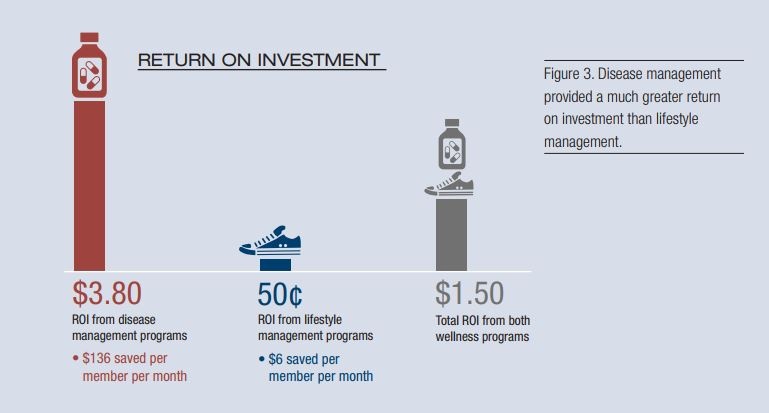Employee wellness programs can reduce your company’s health care costs by lowering risk factors that contribute to chronic conditions and diseases like back pain, high blood
Employees who participate in wellness programs are more likely to improve their eating and sleeping habits, translating to improved cognitive function during the day. The Mayo Clinic found that individuals who participate in regular exercise also have lower instances of stress and improved moods.
What you will learn:
- Benefits of employee wellness programs
- How to set goals
- How to get management on board
- The importance of asking for input
- Why study the data?
- How to actually implement the program
- Add incentives for employees
- Communication is key
Benefits of Employee Wellness Programs.
Implementing the right wellness program encourages employees who are at an increased risk for health issues to make healthier lifestyle choices, which should result in fewer insurance claims and sick days.
Overall, effective wellness programs can produce many positive outcomes. However, each organization is unique in how it administers its own wellness plan, and so results vary from company to company.
Generally, the benefits of having a wellness program are:
- Lowering health care costs for the organization
- Increasing employee productivity and morale
- Mitigating worker's compensation and disability-related claims
- Reduced absenteeism and higher levels of engagement
Implementing Employee Wellness Programs.
Implementing an effective wellness program that will produce results for your company does not have to be expensive nor should it be complex. All it takes is consulting, planning and onboarding! An employee benefits expert can help you design a program that best meets your team's goals and budget.
1. Plan and Set Goals.
Like (almost) everything else in life, employee wellness programs must have definable goals in order to be successful. Here are a few of the most common goals we help set for clients:
- Reducing overall absenteeism due to illnesses
- Minimizing frequency of health insurance claims (reducing premium)
- Setting an initial budget for the wellness plan
2. Get Management On-Board.
The support of your entire management team is key; from executives to supervisors, everyone should be on the same page.
To accomplish this goal, schedule a time for your executives and managers to meet and discuss creating new employee wellness programs. Ask for their advice and suggestions on how to improve the health and wellness of their teams and themselves.
After the initial meeting, you will want to schedule another meeting just before the program is implemented and monthly meetings to report progress and/or tweak the program in order to increase effectiveness.
3. Ask for Input.
Once you have a basic idea of your employee wellness program, you will want to create an anonymous survey for all of your employees, managers and executives. Most insurance companies have health assessment surveys available for large and small businesses. You will also want to gauge interest in certain programs.
For example, would your employees like to participate in 10-minute walking sessions several times a day? Would they prefer healthier food options in vending machines and in any on-site cafeterias, and would they be interested in participating in nutrition classes?
4. Study the Survey Data.
Once you have all the surveys and input from all your employees, evaluate the data to determine their activity levels, how many individuals smoke, drink or have otherwise unhealthy habits?
You should also consider the overall interest levels in the suggested activities and program incentives. This will help you create individual program components, like daily walking and exercise activities, cessation classes, and annual on-site health evaluations by medical professionals.
5. Implement the Wellness Program.
The plan should include preventative programs for healthy eating, being more active, weight loss and even disease management. For example, encouraging employees to schedule regular follow-ups with their doctors and facilitating reminder apps for taking medications. A RAND.org study found that disease management provides the highest return on investment.

Source: Rand.org study on wellness programs
Once you have all the components of the program defined, set a date to implement your program and remind employees to sign up and participate.
Allotting time for employees to walk or exercise during work hours has been a successful tactic of encouragement. Also consider hosting health and wellness workshops and/or classes at work.
6. Offer Incentives.
The part every employee loves. To improve participation rates and encourage employees to adopt a healthy lifestyle, positive reinforcement goes a long way. Offering incentives, like gift cards and gym memberships, to employees that achieve certain wellness goals.
For example, you might offer $10 gym membership discounts to employees who achieve fitness goals they set for themselves. For individuals who successfully stop smoking or give up other unhealthy or addictive habits, you may want to consider offering them discounts on their insurance premiums.
7. Communication.
Simply put, a wellness plan (or any plan for the matter) will fail without clear lines of communication. Even the best wellness plan in the world wouldn't succeed if you can't communicate with the participants!
Being able to send employees reminders, notices, tips and reports efficiently is a game changer. Consider using a free, internal communication tool like Slack, which is easy to use so you can quickly and effectively communicate program updates with your entire team.
The Bottom Line.
In order to offer the best return on your investment, your programs must address prevention and disease management. Make sure executive/management teams are all on board, get employees engaged and boost morale. Consider introducing fun activities like gym memberships and Fitbit challenges to add some excitement and incentives to the initiative. At the end of the day, wellness programs are only as successful as the participants want it to be... motivation and buy-in are crucial!



